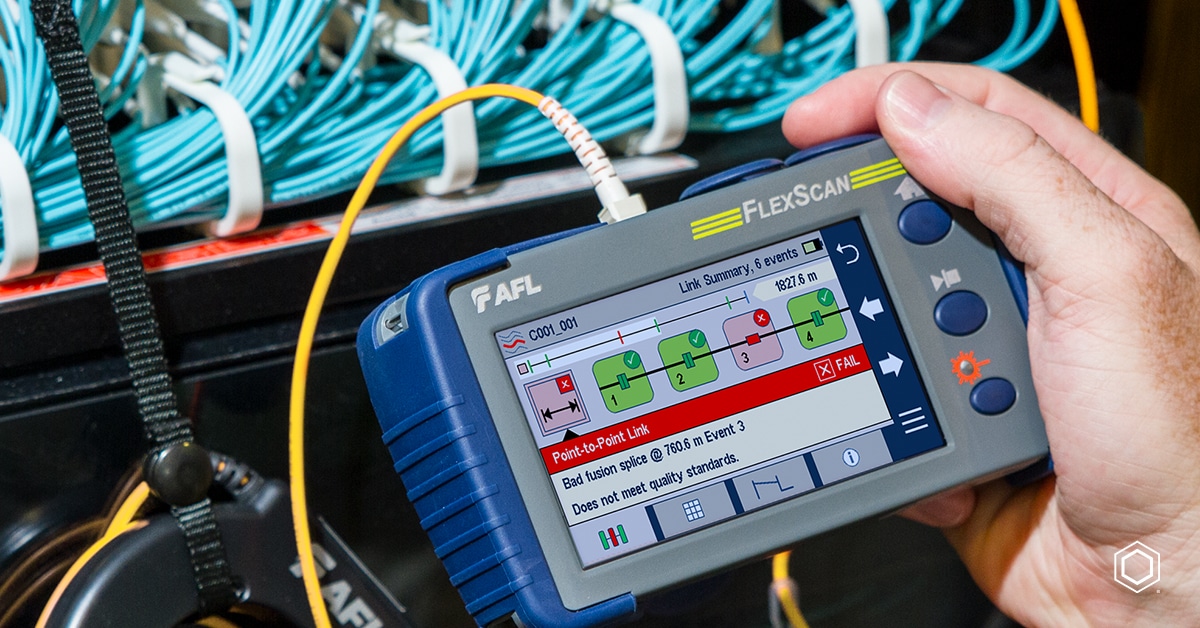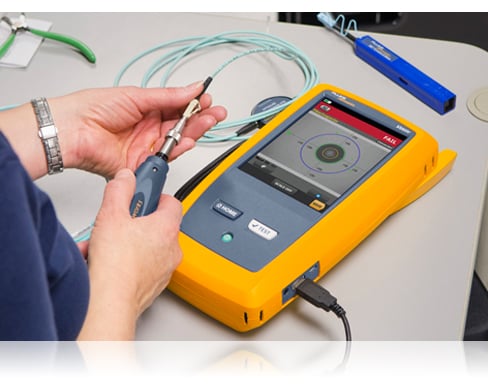Optical fibre testing equipment ensures reliability in fibre network installations.
Optical fibre testing equipment ensures reliability in fibre network installations.
Blog Article
Discover the Importance of Optical Fiber Screening in Modern Telecom
In the realm of contemporary telecoms, the value of optical fibre screening can not be overemphasized, as it functions as the foundation for guaranteeing network integrity and performance. By applying routine testing methods, drivers can preemptively recognize prospective concerns such as signal destruction, hence safeguarding versus interruptions that could confirm expensive. Advanced methods like Optical Time-Domain Reflectometry play a pivotal duty in this process, yet many might forget the more comprehensive ramifications of these practices. What are the particular benefits that normal testing deals, and exactly how might it form the future landscape of telecoms?

Understanding Optical Fiber Testing
Optical fiber screening is a crucial process in telecoms that makes sure the stability and efficiency of fibre optic networks. This screening incorporates a variety of procedures designed to evaluate the physical and practical attributes of optical fibres - ofda. Secret criteria assessed include optical power loss, bandwidth capability, and mistake place, which are crucial for keeping high-grade interaction links
The testing procedure normally includes the usage of specialized equipment such as Optical Time-Domain Reflectometers (OTDR) and Optical Power Meters. OTDRs are used to recognize and identify mistakes, entwines, and ports within the fibre, while power meters gauge the transmitted light signal stamina to determine performance.
Furthermore, testing is conducted at different stages, including during installation, upkeep, and troubleshooting, to guarantee that the network satisfies industry requirements and operational demands. Compliance with requirements established by companies like the International Telecommunication Union (ITU) and the Telecommunications Sector Association (TIA) is paramount.
Advantages of Routine Checking
Normal screening of optical fibers yields countless benefits that considerably boost network dependability and performance. One of the main benefits is the very early detection of prospective concerns, such as breaks or deterioration in the fibre, which can lead to costly downtime if left unaddressed (robotic vision). By recognizing these issues proactively, telecoms service providers can reduce solution disturbances and ensure consistent connectivity for their consumers
Additionally, routine testing aids to preserve the honesty of signal quality. As optical fibers age, their performance can be influenced by elements such as environmental conditions and physical stress. Routine evaluations permit the monitoring of signal loss and total transmission efficiency, guaranteeing that the network runs at optimum degrees.
Another substantial benefit is conformity with industry standards. Regular testing sustains adherence to regulative needs, consequently reducing lawful and financial threats related to non-compliance. Moreover, it enhances the overall life-span of the fiber facilities by promoting timely repair and maintenance.

Common Testing Methods
Testing optical fibers uses numerous techniques to make sure the honesty and performance of telecoms networks. Among one of the most typical strategies is Optical Time Domain Name Reflectometry (OTDR), which evaluates the entire size of the fibre by sending a pulse of light and gauging the representations brought on by imperfections or breaks. This method offers detailed details about the area and seriousness of mistakes.
An additional widespread technique is the usage of Optical Power Meters, which gauge the quantity of light sent through the fiber. This method assists figure out the loss of signal strength, guaranteeing that it satisfies sector criteria. In Addition, Aesthetic Mistake Locators (VFL) are employed to recognize breaks or serious bends in the fiber by forecasting a noticeable laser light into the cable television.
Insertion loss screening is likewise critical, as it measures the loss of signal power arising from links and mates within the network. The use of Polarization Mode Dispersion (PMD) testing analyzes the effect of fiber features on signal honesty.
Each of these techniques plays an essential role in maintaining the efficiency and reliability of optical fibre networks, inevitably adding to seamless telecommunications procedures.
Effect On Network Performance
The stability and efficiency of optical fiber networks straight influence general network performance. In modern telecommunications, the performance of information transmission relies greatly on the quality of the optical fibers made use of. Any type of degradation in the fibre's problem-- whether due to physical damage, contamination, or excessive bending-- can bring about enhanced attenuation and signal loss, substantially affecting information honesty and speed.
Normal optical fiber screening is vital to recognize and rectify possible issues prior to they manifest as network failures or downturns. Techniques such as Optical Time Domain Name Reflectometry (OTDR) and insertion Recommended Site loss testing enable professionals to determine the efficiency of fiber web links precisely. These tests not only assess the physical condition of the fibers but additionally make sure conformity with market requirements, thereby protecting the network's reliability.
Additionally, a well-maintained optical fibre network adds to decreased functional costs and boosted client fulfillment, as end-users experience less interruptions and greater information prices. Eventually, the emphasis on strenuous optical fiber testing practices acts as a foundation for sustaining durable telecommunications facilities, guaranteeing that company can satisfy the growing demands for data transfer and connectivity in today's electronic age.
Future Fads in Examining
As we look ahead, advancements in innovation are poised to improve optical fiber testing in telecoms. The rise of automation and expert system (AI) is expected to enhance the effectiveness and accuracy of testing processes. Automated screening systems can carry out thorough assessments with marginal human treatment, significantly decreasing the possibility for errors and speeding up time-to-deployment.
In addition, the integration of machine discovering formulas will certainly enable predictive upkeep, enabling network providers to predict potential issues prior to they escalate right into failures. This proactive technique not only boosts network integrity yet also optimizes operational costs.
Another arising pattern is the development of mobile screening tools that supply real-time evaluation - fibre testing equipment. These devices will equip service technicians to perform on-site diagnostics swiftly, promoting quicker resolutions and improving solution high quality
The development of 5G networks additionally necessitates the development of screening methodologies. As bandwidth demands raise, typical testing strategies may no longer are sufficient. Cutting-edge solutions such as optical time-domain reflectometry (OTDR) and advanced spectral analysis will certainly become important in guaranteeing the stability and efficiency of high-speed connections.

Verdict
Finally, optical fibre screening is necessary for ensuring the stability and integrity of contemporary telecommunications networks. Routine screening methods not just assist determine possible problems such as signal loss and faults however also imp source add to enhanced network efficiency and customer fulfillment. As the demand for smooth connection remains to expand, click here for more info the fostering of advanced testing approaches will certainly play a vital function in preserving high-quality network standards and sustaining the evolving landscape of telecommunications.
Report this page